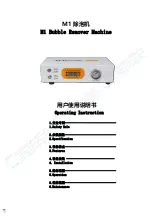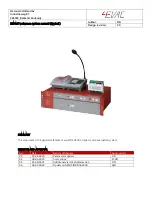
26
Filling the Fuel Tank
Danger
Under certain conditions, diesel fuel and fuel
vapors are highly flammable and explosive. A fire
or explosion from fuel can burn you and others
and can cause property damage.
•
Use a funnel and fill the fuel tank outdoors, in
an open area, when the engine is off and is cold.
Wipe up any fuel that spills.
•
Do not fill the fuel tank completely full. Add fuel
to the fuel tank until the level is 1 in. (25 mm)
below the bottom of the filler neck. This empty
space in the tank allows the fuel to expand.
•
Never smoke when handling fuel, and stay away
from an open flame or where fuel fumes may be
ignited by a spark.
•
Store fuel in a clean, safety-approved container
and keep the cap in place.
1. Tip seat forward and prop it with the support rod so it
cannot fall accidentally. Using a clean rag, clean area
around fuel tank cap (Fig. 22).
2. Remove cap from the fuel tank and fill the 6-1/2 gallon
(25 l) tank to within 1 in. (25 mm) from the top with
diesel fuel. Install fuel tank cap tightly after filling tank.
1
Figure 22
1.
Fuel tank cap
Check Cooling System
Clean debris off screen and radiator/oil cooler daily, more
often if conditions are extremely dusty and dirty.
The cooling system is filled with a 50 / 50 solution of water
and permanent ethylene glycol anti–freeze. Check level of
coolant in expansion tank at beginning of each day before
starting the engine. Capacity of cooling system is 6 quarts
(5.6 l).
•
If engine has been running, pressurized hot
coolant can escape when radiator cap is
removed and cause burns.
Caution
1. Check level of coolant in expansion tank. Coolant level
should be between the marks on side of tank.
1
Figure 23
1.
Expansion tank
2. If coolant level is low, remove expansion tank cap and
replenish the system. DO NOT OVERFILL.
3. Install expansion tank cap.
Checking the Hydraulic System
Fluid
The front axle housing acts as the reservoir for the system.
The transmission and axle housing are shipped from the
factory with approximately 5 quarts (4.7 l) of high quality
hydraulic fluid. However, check fluid level before engine is
first started and daily thereafter.
Note: Fluid to operate the power steering is supplied by the
hydraulic system transmission charge pump. Cold weather
start-up may result in “stiff” operation of the steering until
the hydraulic system has warmed up.
The following list is not assumed to be all–inclusive.
Hydraulic fluids produced by other manufacturers may be
used if they can cross reference to find an equivalent to the
products listed. Toro will not assume responsibility for
Содержание Groundsmaster 328-D
Страница 55: ...55 ...
















































